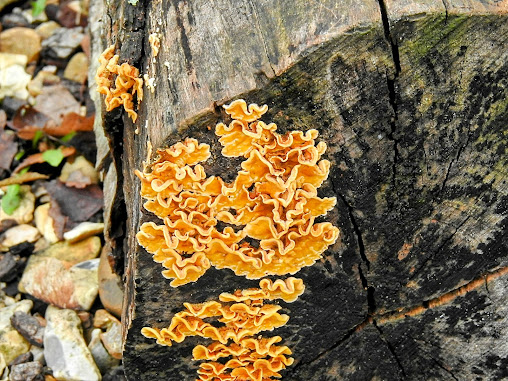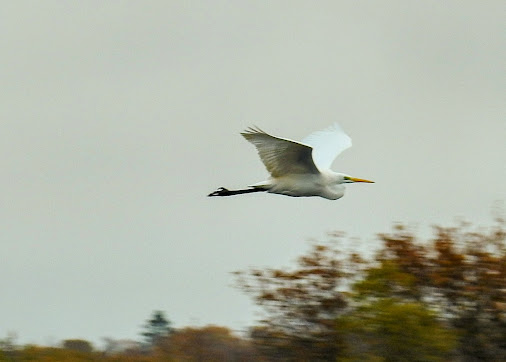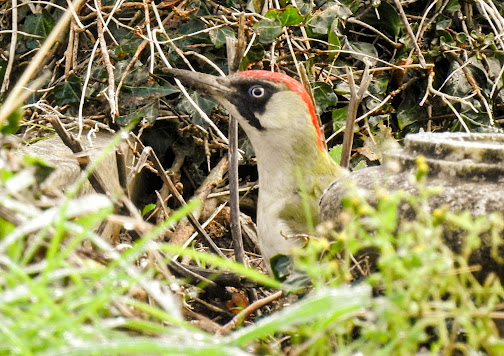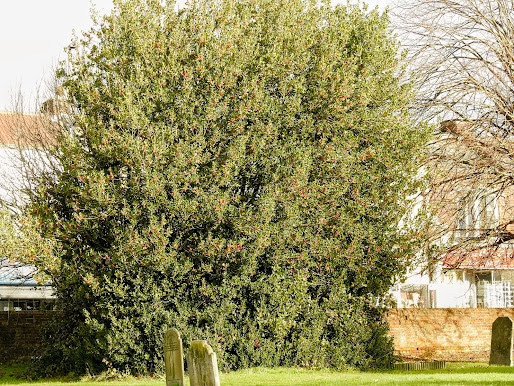Saturday 3rd December 2022.
Our target bird today was the Water Pipit at Blashford Lakes, but it was not to be. This bird (seen yesterday in front of the Tern Hide) would have been another good ‘year-tick’ and with Andy hovering near the 200 species for the year mark, I thought it would be a good bet. However, there was no sign of the bird in front of the Tern Hide during our time there, but I was nicely surprised with two new ‘year-ticks’ to add to my year list. The weather was overcast and very cold, with that north-easterly biting into your face through the Tern Hide window. At least it was dry throughout the day and we were well wrapped up to fight off the cold.
Our first stop was the Tern Hide and on the way there, we had sightings of both Mistle Thrush and a Red Kite to whet the appetite. On reaching the Hide, there was just the one birder present, as I set up my scope, overlooking Ibsley Water looking north. There were good numbers of wildfowl present that included Wigeon, Shoveler, Tufted Duck, Mallard, Pintail, Pochard and Teal while there were smaller numbers of Goldeneye (including 2 drakes and 3 females) and 3 Goosander (2 females and a drake). Around 11 Egyptian Geese were counted over on the west side of the islands, though the only wader I could find was a single Lapwing!
Andy spotted a large raptor flying low over the water which turned out to be a superb male Marsh Harrier. Sadly, it was flying away from us as it flew off north, though with its talons hanging down, I was wondering if it was on the hunt to pick off one of the Coots? It certainly was getting cold with that window open, but we didn't have a choice if we were to view the area properly. The windows over on the side of the Hide are completely useless and I cannot fathom why anyone would design something that simply is a waste of time.
After about an hour or so, we headed off to the Garage nearby for refreshments and then made our way back to the Reserve Centre. From here, we checked the Centre for any moths that were attracted to the night lights, but found none and so made our way to the Woodland Hide. There was a variety of woodland birds present that were feeding on the feeders. A Great Spotted Woodpecker was busy feeding on one of the feeders along with a Nuthatch. Siskins could be heard in the nearby trees and thankfully, some came down to the feeders along with the Nuthatch, Coal Tit, Blue Tit, Great Tit and even a Robin popped on there briefly. Up to 5 Dunnocks were feeding on the ground below, sharing the area with a Wood Mouse!
Our next stop was Ivy South Hide and on the way there, I spotted a Kingfisher briefly fishing over on the small lake opposite the Hide and a Water Rail was heard calling deep within the reedbed there. Amazingly, a pair of Robins, both sporting rings on one of their legs, sat just a few feet away from us. Andy still had some crumbs left from a Flapjack and offered them to the birds as he held out his hand. One was braver than the other and hopped onto his hand to retrieve the crumbs. He told me that even his own Budgie at home would not do that!
From the Hide, most of the wildfowl present were Wigeon, though there were a few Tufted Duck and Mallard among them. A pair of Great White Egrets were seen flying around the lake and one eventually landed on one of the nearby trees. The other bird soon flew past and both birds then flew off. I picked out my third raptor of the day, a Common Buzzard, sailing low over the woods in the distance and on exit of the Hide, a male Sparrowhawk belted through the trees, upsetting the local Long-tailed Tits that gave off their alarm calls. My third raptor of the day! We made our way back to the car, enjoying more views of Siskins flying overhead and so made our way back to the Tern Hide again for another try for the elusive Water Pipit.
Again, on entry, there was only one birder present as we set up a scope and checked out the water and shoreline in front of us. After watching a large skein of Geese arrive and land on the water, which were mostly Canada Geese, I found a Black Swan swimming at the northern end of the Lake. One day soon, I am sure this species will be added to the British list, for they do breed in the wild now. To the west of the Lake, there was a good number of GreyLag Geese and whilst checking them, I found our first Ruddy Shelduck of the year, swimming between two Egyptian Geese.
That was totally unexpected as the bird swam westbound across the water. After letting Andy look through the scope at the bird, I soon lost sight of the bird and so carried on going through the birds on the islands. Here, I found my second ‘year-tick’ literally minutes after the Ruddy Shelduck. Two Barnacle Geese came into view from behind one of the islands as I quickly put Andy onto the birds. I had not seen any this year and although Andy had the ‘plastic’ bird that was on Farlington Marshes earlier this year, whether to say that these were not feral birds is anyone’s guess; but I am more than happy to claim them as wild birds.
Also present here was the female Red-crested Pochard, which was feeding at the northern end of the Lake, which has been present throughout the year here. Again, a genuinely wild bird is always a doubt; but that's the risk one takes with a lot of exotic wildfowl that is kept in captivity. Other birds of note seen in this area of Blashford Lakes were the Yellow-legged Gulls. Before we left, the Gulls were now increasing in numbers that included Herring, Black-headed, Lesser Black-backed and the one Great Black-backed Gull. It is always worth checking through the Gulls for something a bit more rare and I eventually came across first a 1st winter Yellow-legged Gull and then a full adult among the other Gulls on one of the islands.
The Lapwing numbers now rose to around 40+ birds, which were a bit jittery to say the least, as they flew from island to island. To round off the trip here, a Grey Wagtail flew across in front of us and landed on the shoreline further north to finish a very good trip here. Yes, Winter is back with a vengeance and damn cold in the wind today, but along come all those Winter specialties with it.
Driving from Fordingbridge to Cadnam, though we were hoping for a Hen-harrier flying over the heath from the roadside, but we had to make do with Raven flying low over the woodland and then out of view. It seems that a lot of the ‘Lazee’s’ had turned up at a site for Hen-harriers and were rewarded with a gorgeous male and a female bird along with a Merlin present too. Well done guys. After dropping Andy off home, after seeing at least 4 Common Buzzards along the M27, I saw my fifth raptor of the day; a male Kestrel hovering by Milton Lakes from the Eastern Road in Portsmouth. Andy is now on 199 species for the year and hopefully, he might get the Long-tailed Duck from Southmoor tomorrow to get to the magic 200 for the year. We shall see!































































